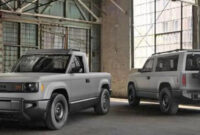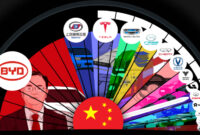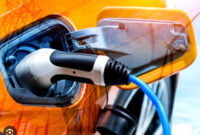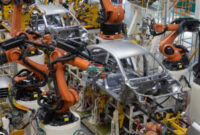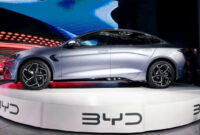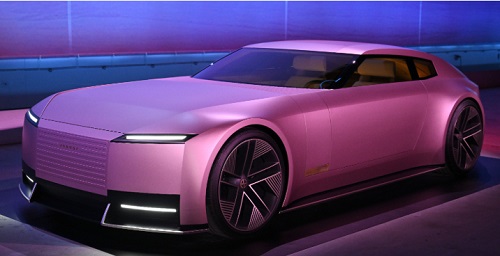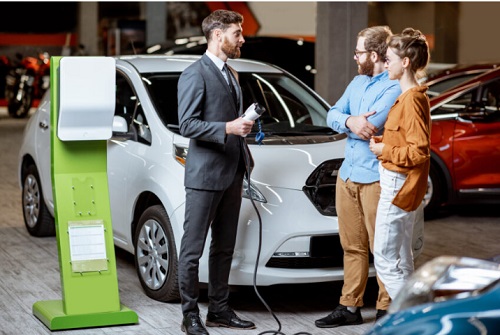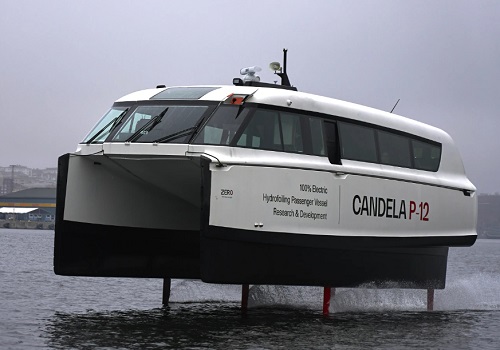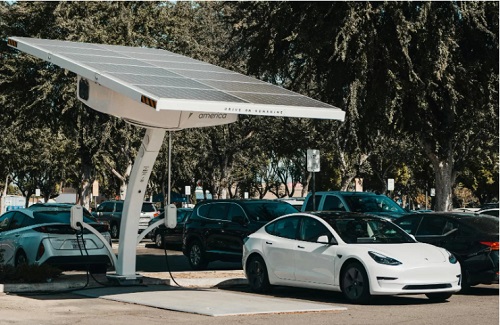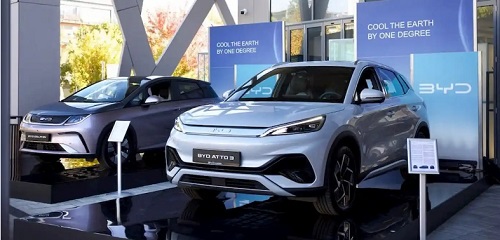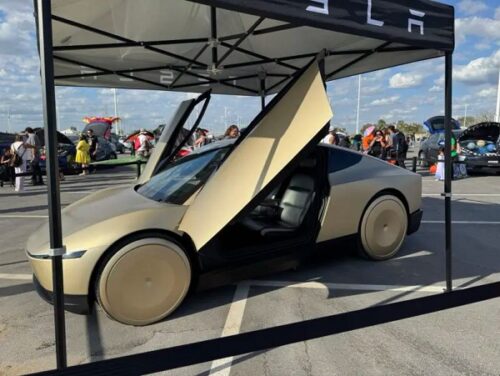Introducing Slate, the new automotive brand that has recently debuted in the US with its first vehicle — an extremely […]
Category: Electric Vehicle
BYD unveils new luxury sports car at China’s largest auto show
Chinese electric vehicle powerhouse BYD has already surpassed long-time leader Tesla in the sales of electrified vehicles. Now, it’s setting […]
BYD Shenzhen, world’s largest car carrier, sailed off to Brazil, company says
On April 27, BYD’s fourth roll-on/roll-off (RoRo) vessel, named Shenzhen, officially embarked on its inaugural ocean journey to Brazil, transporting […]
Competition between China and Europe in an age of mobility transition
China is swiftly increasing its presence in the European electric vehicle market by capitalizing on a well-integrated value chain and […]
US electric vehicle industry is collateral damage in Trump’s escalating trade war
President Donald Trump’s implementation of tariffs has caused major disruptions across multiple facets of the global economy, particularly impacting the […]
Auto prices in the United States will start to rise very soon
Car prices are expected to increase by several thousand dollars due to Trump’s tariffs. This will occur sooner than anticipated. […]
Americans are scrambling to buy cars ahead of tariffs
Dealerships experienced a surge of buyers in March as consumers rushed to purchase vehicles before potential price increases due to […]
BYD posts robust growth in car sales as it takes on Tesla globally
Chinese electric vehicle leader BYD has reported a 60% increase in sales during the first quarter of the year as […]
Auto Insurance: Definition, How It Works, Coverage Types & Costs
When purchasing or leasing a vehicle, safeguarding that investment is crucial. Obtaining auto insurance can provide peace of mind in […]
Shop Auto Insurance – You’ll more than likely save on auto insurance if you shop around for quotes
Insurance may not be the most thrilling aspect of owning a vehicle, but it is crucial. Your insurance policy is […]
Would you travel by flying taxi?
The opportunity to glide above congestion in some of the globe’s most prominent cities feels like a long-anticipated glimpse into […]
The future of air mobility: Electric aircraft and flying taxis
Toyota is allocating an additional $500 million towards Joby Aviation to assist the air taxi startup with the certification and […]
Jaguar’s new concept car divides opinion
The luxury automobile manufacturer Jaguar has introduced its latest electric concept vehicle, which has sparked mixed reactions, similar to a […]
Ford’s UK boss has called on the government to provide consumer incentives
Ford’s UK leader is urging the government to introduce consumer incentives of up to £5,000 per vehicle to increase the […]
UK electric car sales hit a record high in September
Sales of electric vehicles in the UK reached an all-time high in September, despite executives from major automakers expressing concerns […]
The Xiaomi SU7 Ultra received 3,680 pre-orders 10 minutes after pre-sales began
Xiaomi’s first electric vehicle, the SU7, has become an overwhelming success for the Chinese smartphone company, but it continues to […]
A high-tech Electric hydrofoil ferry service began operating in Stockholm
A new electric ferry service using advanced technology started operations in Stockholm on Tuesday, providing commuters with an eco-friendly option […]
Hybrid vs. electric cars: What’s the difference?
For a lot of car purchasers, hybrids appear to be a good middle ground between gasoline and electric vehicles. Hybrids, […]
BYD gets momentum continues to build for China’s bestselling car maker
The Chinese electric vehicle manufacturer BYD has experienced a significant surge in its quarterly revenues, surpassing Tesla for the first […]
A test mule of Tesla’s upcoming robotaxi has allegedly been spotted in Los Angeles
A prototype of what appears to be Tesla’s forthcoming robotaxi has been noticed by a Reddit user who claims to […]

